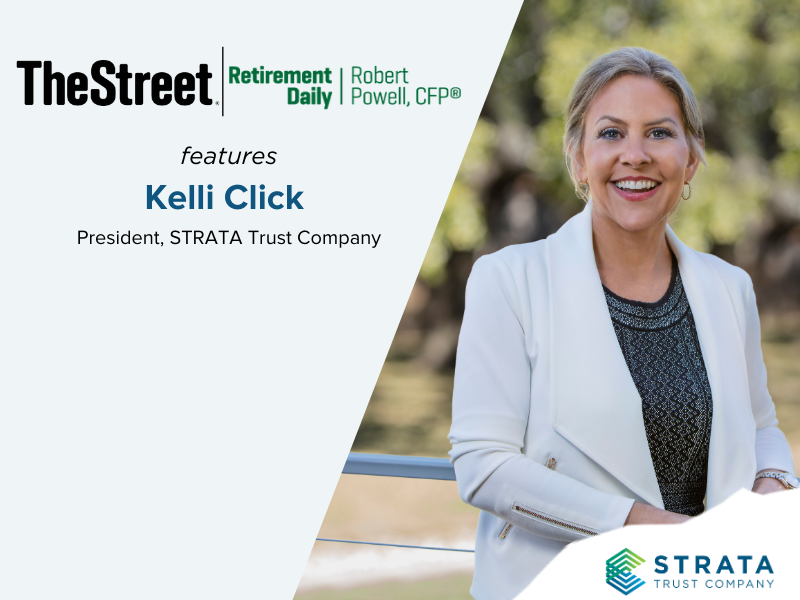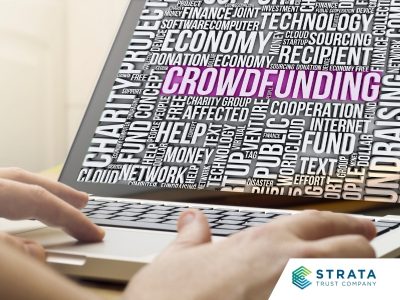Article originally published on TheStreet –
It’s understandable if investors in 2020 are feeling a little bit dizzy. The year started off with stock market indices hitting new record highs in February, but this was soon followed by major market selloffs as the coronavirus pandemic took hold.
Stocks have staged a remarkable comeback since bottoming out in late March, with both the S&P 500 and NASDAQ soaring to new highs. Lots of investors are now wondering what’s next: More record closes for the stock market or another plunge like we saw back in the spring?
The extreme volatility we have witnessed this year reinforces the importance of diversifying your investment portfolio to help protect your retirement assets. Diversification is an investing buzzword, and achieving it can be a winding road. One way to do this is to invest in alternative assets within a self-directed IRA (SDIRA).
SDIRA is a retirement account that allows you to allocate funds to a wide range of alternative assets, while benefiting from tax advantages. For example, asset growth in an SDIRA can be tax-deferred or even tax free.
Asset protection is a retirement investor’s number one priority
Alternatives expose investors to a larger universe of investment options, well beyond traditional stocks, bonds and cash equivalents. Alternative assets include real estate, private equity, private debt, commodities, hedge funds, energy, crowdfunding, cryptocurrency, structured settlements and precious metals, among others.
Broadening your investing horizons to include these alternative assets can help you increase your investment returns by tapping into the full potential of the investment universe within your SDIRA. For example, Investopedia reports that “over a 30-year period, stocks have outperformed gold and bonds have been similar to one another, but over a 15-year period, gold has outperformed stocks and bonds.” By diversifying your portfolio, you could benefit from both traditional and alternative assets, potentially meeting your retirement goals sooner.
Additionally, you can directly own many types of alternative assets held in an SDIRA, rather than simply owning shares via a mutual fund or ETF. Direct ownership through an SDIRA has its advantages, as it allows you to pick and choose your individual investments. Through private equity, for example, you could invest in private companies like a local startup venture, offering you the opportunity to diversify your assets and help to make an impact related to economic development. In addition to increasing portfolio diversification, you can realize tax benefits by investing in alternative assets.
SDIRA structure is inherently tax-advantaged
Investment income, including capital gains, is taxable at current ordinary income tax rates if assets are held in a taxable (i.e., non-retirement) account. But income and capital gains are tax-deferred if they’re held in a traditional IRA or tax-free if held in a Roth IRA.
There are complex tax rules associated with some types of alternative investments. By holding alternative assets in an SDIRA, you can avoid some of these complications. For example, allocations of income and distributions with private equity investments are treated similarly to stock holdings when these investments are held within an SDIRA, with dividends and appreciation tax-deferred in a traditional IRA or tax-free in a Roth IRA.
Similarly, income and losses from private equity investments structured as LLCs are reported on a Schedule K-1. You have to complete this document and take it to your CPA to figure out if tax is owed and how this fits into your personal tax situation on an annual basis. But this isn’t necessary if the investment is held in an SDIRA.
It’s important to note, if an investment generates unrelated business taxable income (UBTI), there’s the potential that you will have to pay tax from your IRA on the amount of UBTI earned. In the event that “phantom” income is generated — or in other words, the investment shows a paper gain — you will have to pay the tax out-of-pocket if the investment is held in a non-retirement account. Holding the investment in an SDIRA avoids this situation since any UBTI tax owed would be paid directly by the IRA.
Setting up an SDIRA is a three-step process
Depending on who you work with, setting up an SDIRA can be a simple and efficient process, allowing you to fund the account quickly. The first step to holding alternative assets in an SDIRA is to select which investments you wish to hold. Of note, there are several asset types that are off limits to SDIRAs, including artwork, gemstones, other collectibles and insurance contracts.
Next, determine what type of SDIRA is best-suited for you. You have the option of opening an SDIRA as a traditional or Roth IRA, and if you are self-employed, you can open a self-directed SIMPLE or SEP IRA. While each option has its unique pros and cons depending on your situation, they all provide access to alternative assets.
Finally, it’s time to open an account with a custodian or administrator. There are several noteworthy differences to keep in mind. Custodians are typically banks or trust companies that federal or state banking authorities regulate. Administrators, on the other hand, serve as middlemen between investors and custodians. Unlike custodians, administrators are not directly approved by the IRS.
Staying informed as an investor is key
If you own an SDIRA, you’ll want to ensure not to make any prohibited transactions, which are outlined in IRC Section 4975. For example, you cannot use your SDIRA to lend funds to your spouse or certain relatives (child, parent, etc.). If you do, you could incur an excise tax, among other consequences. A custodian can be an important resource here, as they may provide helpful educational information that can help you to identify and avoid prohibited transactions.
As an investor, it’s also important to be on the lookout for potential fraud. In March, the Financial Industry Regulatory Authority (FINRA) alerted investors to “fraudulent schemes related to the coronavirus (COVID-19) pandemic,” including investment fraud, fake CDC emails, and phishing scams. FINRA has also connected with the North American Securities Administrators Association (NASAA) to prompt investors to be mindful of crisis-related investment scams, which “claim to be raising money for companies promising new health care products that can detect, treat, or cure the coronavirus.” In their communications, FINRA and NASAA emphasize the value of carefully researching investment opportunities.
Volatility: The new norm
With the ongoing uncertainty of the coronavirus pandemic, not to mention the aftermath of the elections, it’s probably safe to assume that market volatility isn’t going away anytime soon. Given this, now may be a good time to think about investing in alternative assets within an SDIRA in order to increase portfolio diversification and avoid potential tax implications.





